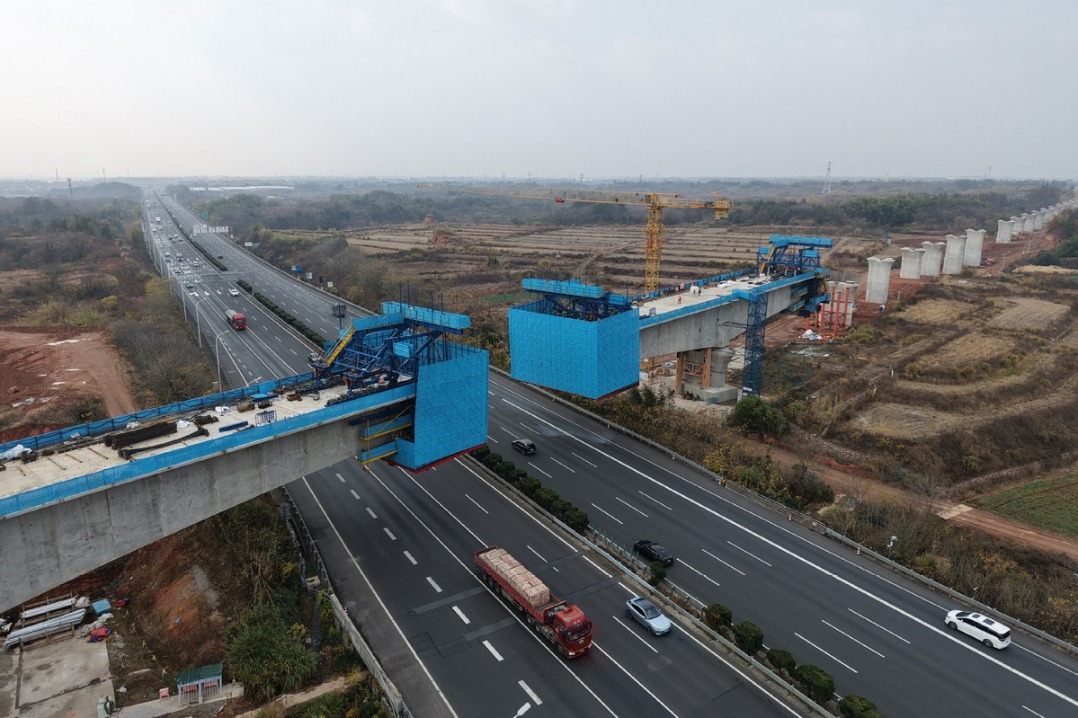Omicron BF.7 subvariant leads to outbreaks






Highly infectious strain detected in Inner Mongolia, Guangdong, Shandong
At least three regions on the Chinese mainland have reported COVID-19 outbreaks involving the Omicron subvariant BF.7, increasing the pressure on local authorities in epidemic prevention and control.
The strain was first detected in an outbreak in Hohhot in the Inner Mongolia autonomous region in late September. In around 10 days since, the cities of Shaoguan, Guangdong province and Yantai, Shandong province had reported cases involving the subvariant.
A new round of mass nucleic acid testing was conducted in Hohhot on Monday, in an effort to control the sources of the infection and cut off transmission chains, local officials said.
"The current outbreak in Hohhot involves the Omicron subvariant BF.7, which is more infectious and transmissible," Liu Yuanjun, an official with the city's health commission, said at a news conference on Monday. "In the face of the rapid development of the epidemic, nucleic acid testing is key. We can determine the epidemic situation by the number and distribution of infections after each screening and then scientifically arrange the mass testing and control measures."
The region reported 119 locally transmitted confirmed COVID-19 cases and 559 asymptomatic carriers on Sunday, the region's health commission said. It registered the mainland's largest number of confirmed cases on Sunday.
Of those, 87 confirmed and 499 asymptomatic cases were detected in Hohhot, bringing the current tally in the city in the latest outbreak to 794 and 2,538, respectively.
The city has increased the number of designated hospitals and makeshift hospitals for COVID-19 cases, providing up to 5,900 available beds, Liu said.
"Medical workers will provide special services for certain patients, including children, pregnant women and patients with underlying diseases," Liu said.
"Different treatment methods will be implemented for patients depending on their condition."
Meanwhile, Yantai, Shandong province, reported infections involving the same subvariant on Monday.
The city has reported one confirmed case and nine asymptomatic cases since Oct 4.
All infections were found in people who had returned from regions outside the province and their close contacts, local officials said at a Monday news conference.
Gene sequencing results showed a clear transmission chain, which was similar to cases outside the province. All the patients are in stable condition and have been transported to the city's Qishan Hospital for observation and treatment.
In addition, two major COVID-19 transmission chains have been identified in Shaoguan, Guangdong, which recently reported multiple sporadic cases, a senior disease control and prevention official from the city said.
Omicron variants BF.7 and BA.5.1.7 are the primary strains in the city, said Li Shujian, deputy director of the Shaoguan Center for Disease Control and Prevention, over the weekend.
Compared with other Omicron variants, BF.7 is characterized by stronger infectiousness, ease of diffusion and ability to escape detection. It can easily cause large-scale outbreaks, Li said.
The patients mainly develop symptoms of high fever, persistent cough, body aches, headaches, sore throat, changes in sense of smell and loss of appetite after they have been infected. Experts say that BF.7 could become the dominant virus worldwide this autumn and winter.
According to Li, Shaoguan's first case was detected when a local resident surnamed Chen, who was infected with the virus outside the city, returned from Inner Mongolia on Sept 30.
- China seeks public feedback on draft rules for anthropomorphic AI services
- China's top legislature concludes standing committee session
- China adopts revised Civil Aviation Law
- China launches satellite to aid in early extreme weather detection
- Report on mining accident that killed 6 suggests accountability for 42 individuals
- Law aimed at bolstering standard Chinese language education passed

































